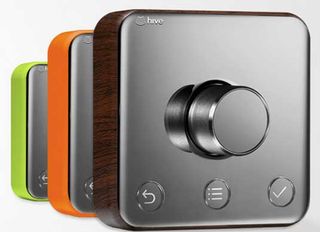3 digital trends shaping the future for brands
John Newbold, co-founder at customer experience studio 383, picks three key themes from the Canvas Conference that will shape our futures.

The recent Canvas Conference for designers, engineers and UX professionals revealed some fascinating inside stories from brands building some of the world's most useful products and services.
Held at the Library of Birmingham, three themes came to light which indicate how our future world will evolve. Three themes sit at the heart of new product development and the online customer experience:
- enhanced personalisation
- greater connectivity
- digital progression that problem-solves rather than blurs
Take the finance sector, for example. Personal banking has been hugely simplified by smartphone apps that enable customers to move money effortlessly and save time they would have otherwise have spent standing in the queue at their local branch.
Yet, there are still cases where it feels like financial services are making money matters deliberately hard for consumers to understand. One of these is currency exchange.
Simpler money
Dave Wascha, global director of digital products at Travelex admits that despite studying more maths than most, even he found it almost impossible to work out how much yen he could get for a £50 note at the airport when looking at those 'we buy/we sell' boards.

This is one of the areas Travelex is committed to simplifying through digital innovation and by treating money as a product that needs demystifying through better design.
Travelex has already seen problem-solving success with an app that helps users to predict how much money they may need while abroad and its 'Supercard' that prevents UK banks from charging fees for overseas transactions.
The Supercard was designed to possess all the user benefits of using cash aboard with all the added security benefits of a credit card.
Home revolution
Solving existing consumer experience issues through product design will evolve alongside making our lives easier for the future via greater connectivity.
Hive exemplified this to attendees by discussing how its digital thermostat was born out of people's inability to control the temperature of their own homes (90 per cent can't control their thermostat according to market research), the concern for how much energy they're using and a desire for better product design.

By solving these consumer-needs, Hive is also revolutionising the way that people interact with their home environments in a more connected way.
This will open-up new markets for more smart connected products such as sensors for windows and doors, smart-plugs and lighting controls.
Connected humans
If Hive is driving a more connected, design-led home for the future, Withings is taking a similar design approach to a more connected human.
Julient de Preaumont, Withings CMO, outlined his vision for a world where people can track their health, weight and sleep patterns via dashboards in the firm's everyday connected products such as bathroom scales, home security cameras and watches.
With more connected devices, greater personalisation will become a natural by-product.
Boosting engagement
Already, online brands such as Etsy, and beauty product discovery service, Birchbox strive for greater understanding of their customers' buying habits and behaviour both online and in the real world.
Birchbox CTO Liz Crawford told Canvas she's seen a 12 times boost in engagement after the brand began communicating with its one million subscribers across six countries in ways that better suited their schedules as opposed to the company's internal marketing schedule.

For instance, if someone was browsing at lunchtime and didn't buy, they may receive a discount and product recommendation later on in the day, when they've more time to interact with the products and make a purchase.
It's these three themes that will ultimately shape the future of digital product design and help transform our lives for the better in the process.
Words: John Newbold
John Newbold is co-founder at customer experience studio 383 and the organiser of Canvas Conference.
Like this? Read these!

Thank you for reading 5 articles this month* Join now for unlimited access
Enjoy your first month for just £1 / $1 / €1
*Read 5 free articles per month without a subscription

Join now for unlimited access
Try first month for just £1 / $1 / €1
Get the Creative Bloq Newsletter
Daily design news, reviews, how-tos and more, as picked by the editors.
The Creative Bloq team is made up of a group of design fans, and has changed and evolved since Creative Bloq began back in 2012. The current website team consists of eight full-time members of staff: Editor Georgia Coggan, Deputy Editor Rosie Hilder, Ecommerce Editor Beren Neale, Senior News Editor Daniel Piper, Editor, Digital Art and 3D Ian Dean, Tech Reviews Editor Erlingur Einarsson and Ecommerce Writer Beth Nicholls and Staff Writer Natalie Fear, as well as a roster of freelancers from around the world. The 3D World and ImagineFX magazine teams also pitch in, ensuring that content from 3D World and ImagineFX is represented on Creative Bloq.
